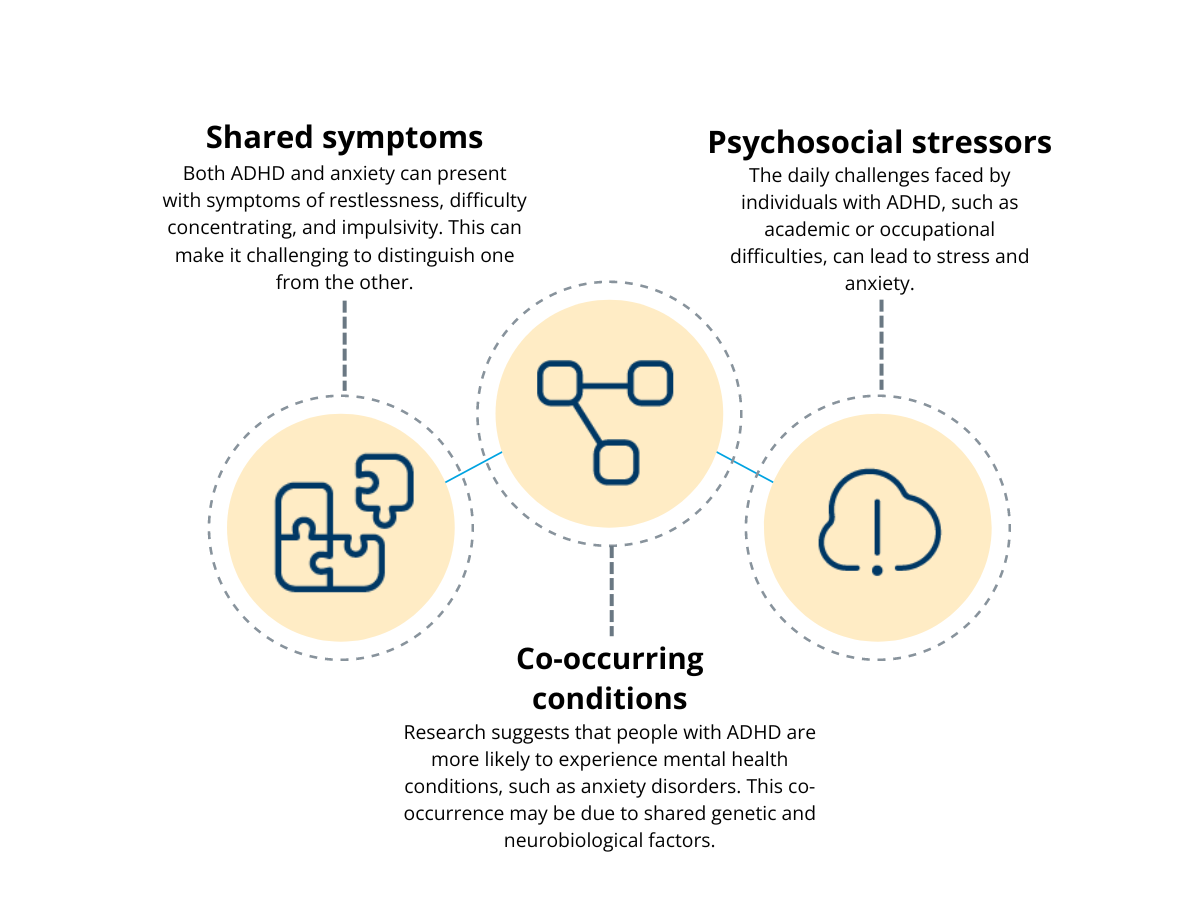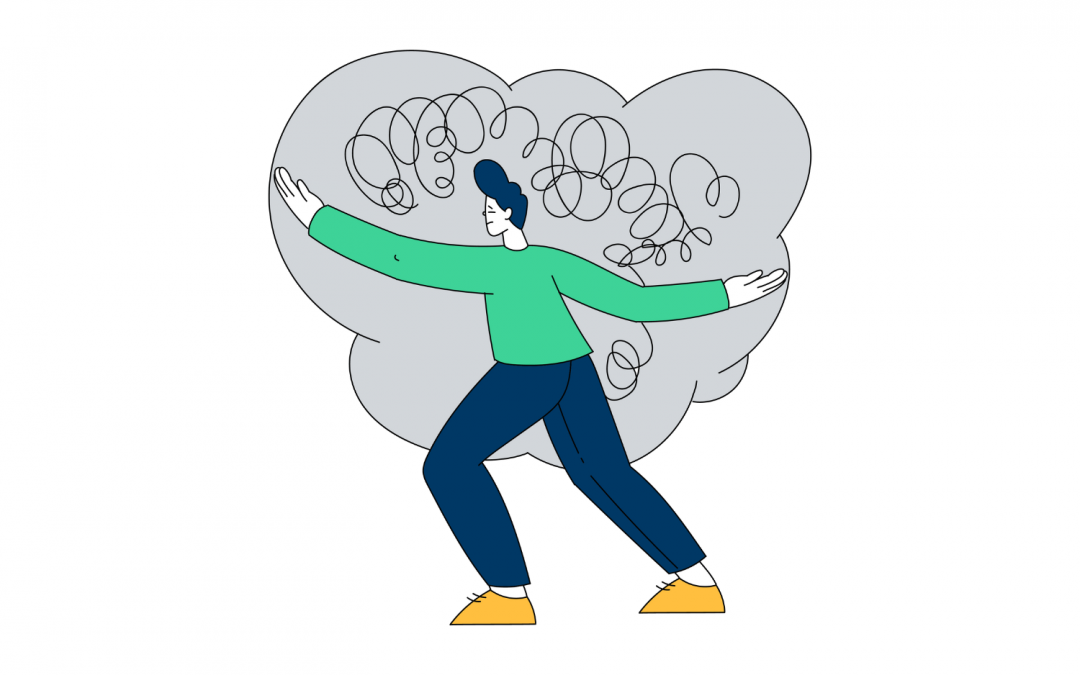ADHD and anxiety
Attention-Deficit/Hyperactivity Disorder (ADHD) and anxiety are two distinct conditions, but they often occur alongside each other (which we refer to as co-occurring). Co-occurring conditions can have a significant impact on an individual’s life. In this blog post, we will delve into what ADHD and anxiety are and why they are linked. We’ll consider what research has found about this connection, how to tell the difference between the two, and the available support for those living with these conditions.
What is ADHD?
ADHD is a neurodevelopmental condition which is recognised through symptoms of inattention, hyperactivity and impulsivity. People with ADHD may find certain tasks difficult if they require sustained attention, organisation and impulse control.
What is anxiety?
Anxiety is a mental health condition which is defined by excessive worry, fear or nervousness about future events or situations. Anxiety can present in various forms, including generalized anxiety disorder (GAD), panic disorder, social anxiety disorder, post-traumatic stress disorder and specific phobias.
The link between ADHD and anxiety
The link between ADHD and anxiety is complex and involves lots of different factors that contribute to the conditions. These include:

ADHD and anxiety: Research findings
Numerous studies have explored the link between ADHD and anxiety. A study published in The Journal of Attention Disorders found that people with ADHD were more likely to have anxiety disorders than those without ADHD. Another study in Psychiatry Research found that children with ADHD often developed anxiety disorders as they became teenagers.
How to tell the difference
Distinguishing between ADHD and anxiety can be challenging due to overlapping symptoms. However, some key differences can help healthcare professionals when they make their diagnosis:
Primary symptoms: ADHD primarily involves symptoms related to inattention, hyperactivity, and impulsivity. Anxiety revolves around excessive worry and fear.
Timing: ADHD symptoms appear first in childhood and remain consistent over time. Anxiety may emerge at any age and can be triggered by specific stressful events or experiences.
Response to Stimulants: ADHD symptoms often respond positively to stimulant medications, whereas anxiety symptoms may get worse with stimulants.
ADHD and anxiety often co-occur, which makes it important to address both conditions with comprehensive mental health care. An assessment by a professional is the first step in developing an effective plan. With the right support, people can successfully manage these conditions together and excel in everyday life.
Get in touch today to find out how Aim Forward can help you create solutions to shape your future.
For the latest information, tips and tools on neurodiversity and mental health, sign up for our newsletter today.

